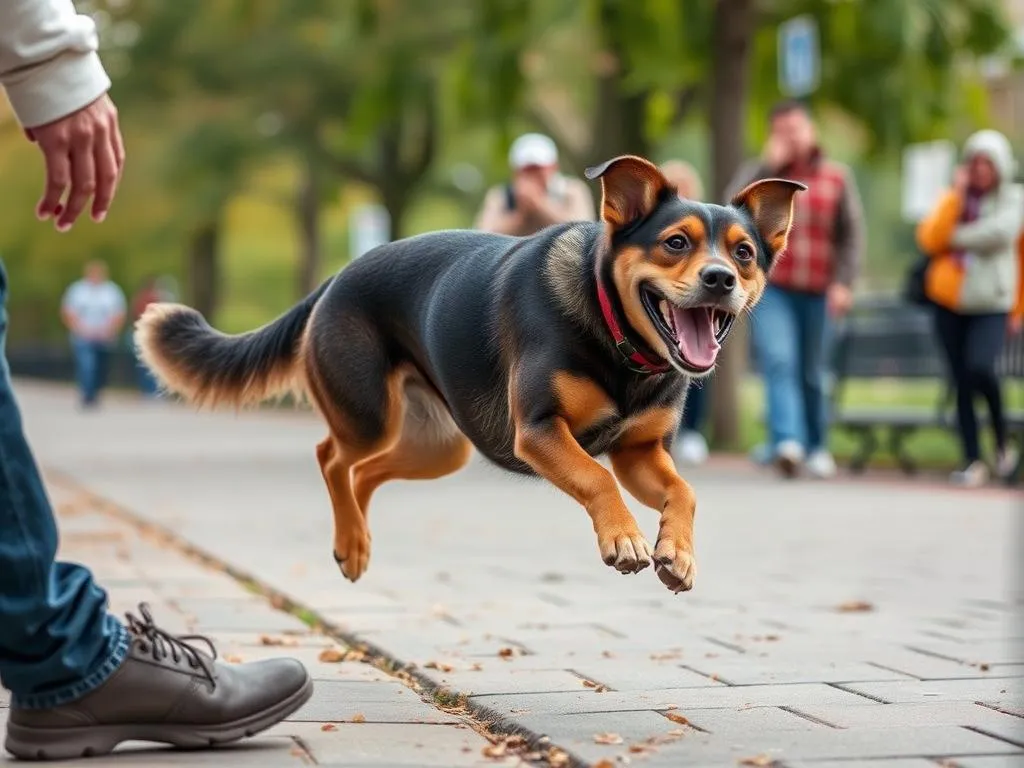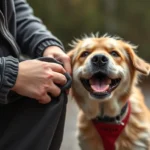
Introduction
How to stop your dog from jumping on people is a common concern for many dog owners. While jumping can seem like a harmless expression of excitement or affection, it can lead to safety issues and negative social interactions. Addressing this behavior is crucial not only for the well-being of your dog but also for the comfort of your guests. In this article, we will explore the reasons behind jumping, effective training methods, common mistakes to avoid, and the importance of socialization.
Understanding the Behavior
Why Dogs Jump
Dogs jump for various reasons, often driven by their natural instincts and behaviors. Understanding these motivations can help you manage and redirect this behavior effectively.
- Greeting and Excitement: Jumping is often a dog’s way of saying “hello.” When they see a familiar person, the excitement can lead to enthusiastic leaping.
- Socialization and Attention-Seeking: Dogs are social creatures and often jump to gain attention. This can stem from a desire to engage with their human companions or to assert themselves in social situations.
The Impact of Jumping
The act of jumping can have several consequences, both for the dog and the people around them.
- Potential Safety Hazards: A jumping dog can inadvertently knock over small children, elderly individuals, or even cause injury to themselves if they leap onto someone unexpectedly.
- Negative Perceptions: Dogs that jump excessively may be viewed as unruly or poorly trained, which can affect their socialization with other dogs and people. This perception can lead to fewer playdates or social interactions, hindering their overall development.
Preparing for Training
Assessing Your Dog’s Behavior
Before you can effectively train your dog, it’s essential to understand the context of their jumping behavior.
- Identifying Triggers: Observe when your dog tends to jump. Is it during greetings, when they see other dogs, or when they are excited about playtime?
- Keeping a Journal: Document instances of jumping to identify patterns. This can help you understand what situations trigger the behavior, allowing for tailored training strategies.
Setting Training Goals
Establishing clear training goals is essential for success.
- Define Success: Determine what a successful greeting looks like for you and your dog. This might include a calm dog that sits or stays when people arrive.
- Consistency and Patience: Training takes time, and it’s crucial to remain patient and consistent. Dogs thrive on routine, so establishing a regular training schedule will yield better results.
Training Techniques to Stop Jumping
Positive Reinforcement
One of the most effective ways to curb jumping behavior is through positive reinforcement.
- Using Treats and Praise: When your dog greets someone calmly, reward them with treats and praise. This encourages your dog to repeat the desired behavior.
- Timing Matters: Reward your dog immediately after they exhibit calm behavior. This helps them associate their actions with positive outcomes.
Redirecting Attention
Teaching your dog an alternative behavior can effectively reduce jumping.
- Sit or Stay: Train your dog to sit or stay when they greet people. This gives them a clear task to focus on rather than jumping.
- Distraction Techniques: Use toys or commands to redirect your dog’s energy when guests arrive. This can help them channel their excitement into acceptable behaviors.
Ignoring the Behavior
Another important method is to ignore jumping behavior altogether.
- No Attention for Jumping: When your dog jumps, turn away and avoid giving them any attention. This teaches them that jumping does not yield the desired response.
- Guidelines for Ignoring: Consistently ignore jumping, but remember to reward calm behavior as soon as they stop jumping. This balance reinforces the idea that calmness is the key to receiving attention.
Using Command Training
Basic command training can be incredibly helpful in managing your dog’s behavior.
- Essential Commands: Teach your dog commands like “sit” and “down.” These commands can be used as alternatives to jumping.
- Step-by-Step Instructions: Begin with short training sessions, rewarding your dog for following commands. Gradually increase the difficulty by introducing distractions.
Controlled Greetings
Practicing in controlled environments can prepare your dog for real-life situations.
- Leash Training: Use a leash during practice sessions to maintain control over your dog. This allows you to manage their behavior more effectively.
- Role-Playing: Involve friends or family members in controlled greetings. This simulates real situations and helps your dog learn how to behave appropriately.
Common Mistakes to Avoid
Inconsistency in Training
One of the biggest mistakes owners make is inconsistency in training.
- Unified Approach: Ensure that everyone in your household follows the same training methods. Mixed signals can confuse your dog and hinder progress.
Punishing the Dog
Punishment can be counterproductive and harm your relationship with your dog.
- Understanding Consequences: Instead of punishment, focus on redirecting and rewarding positive behavior. This fosters trust and strengthens your bond.
Allowing Jumping in Some Situations
Avoid giving mixed signals by permitting jumping in certain situations.
- Consistent Rules: If jumping is unacceptable with guests, it should be banned at all times. Consistency is key to effective training.
The Role of Socialization
Importance of Early Socialization
Early socialization plays a crucial role in shaping your dog’s behavior.
- Exposure to Various Situations: Introducing your dog to different people, environments, and experiences helps them learn appropriate behaviors.
- Building Confidence: Well-socialized dogs are typically more confident and less likely to exhibit jumping behavior as a means of seeking attention.
Continued Socialization Efforts
Socialization should continue throughout your dog’s life.
- Maintaining Socialization: Regularly expose your dog to new experiences, people, and other dogs. This helps reinforce good behavior and reduces anxiety.
- Safe Environments: Look for dog-friendly spaces where your dog can interact with others safely. This provides valuable opportunities for practice.
When to Seek Professional Help
Signs You Might Need a Trainer
Recognizing when to seek professional help is essential for effective training.
- Ineffective Self-Training: If you find that your training efforts are not yielding results, it may be time to consult a professional trainer.
What to Look for in a Professional Trainer
When seeking a trainer, consider their qualifications and methods.
- Credentials and Experience: Look for trainers with certifications and experience in dealing with jumping behavior.
- Training Methods: Ensure that the trainer employs positive reinforcement techniques rather than punitive methods.
Conclusion
In summary, addressing the issue of how to stop your dog from jumping on people is vital for both safety and socialization. By understanding the underlying behavior, preparing for training, and employing effective techniques, you can foster better interactions for your dog and those around them. Remember that consistency, patience, and a loving approach will yield the best results.
FAQs
Why does my dog jump on everyone?
Dogs often jump as a way to greet people or seek attention. It’s a natural behavior driven by excitement and social instincts.
How long will it take to train my dog not to jump?
The duration of training varies by dog. Consistent practice and positive reinforcement can lead to noticeable improvements within a few weeks.
What should I do if my dog jumps on children?
Teach your dog to greet calmly by using commands like “sit” or “stay.” Always supervise interactions between your dog and children to ensure safety.
Can I train an older dog to stop jumping?
Yes, older dogs can learn new behaviors. It may take more time and patience, but with consistent training, they can be taught to greet calmly.
Is it okay to let my dog jump on me?
While it can be tempting to allow your dog to jump on you, it’s essential to be consistent. Allowing jumping in some situations can confuse your dog about when it’s acceptable behavior.









